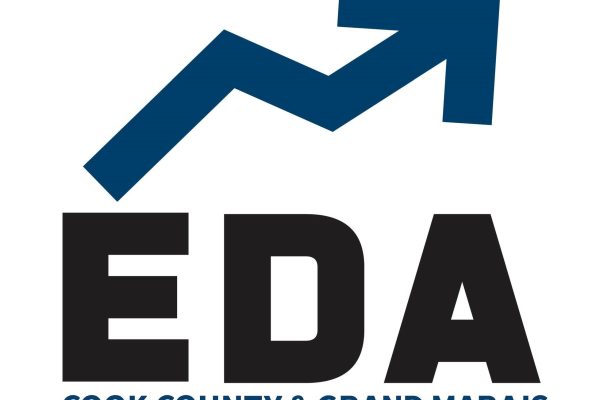Commissioners increase their own salaries despite pleas that “now is not the right time”
Despite the urging of his fellow commissioners that “now is not the right time,” Cook County Commissioner Dave Mills insisted on giving himself and the others on the county board a pay raise.
He got one. Though the amount was a fraction of what Mills sought.
Mills made a motion during the Dec. 13 meeting of the county board to increase the commissioners’ salaries by approximately $15,000 for 2023. The motion failed, but the issue was tabled until the Dec. 20 meeting. Mills, using words like “poverty” to describe his financial compensation serving as an elected official in Cook County, remained adamant that he is not paid properly for his efforts serving on the county board. Mills often referenced his base salary for 2022 as a reason he and the other commissioners deserve a raise. The commissioners were paid $23,066 in 2022, with the board chair (Ann Sullivan) receiving an extra $1,000 and the vice chair (Bob Svaleson) receiving an extra $500. In 2021, the commissioners not serving as chair or vice chair were paid $22,394.
However, there’s more to the story than just the base salary when it comes to compensation for Cook County commissioners.
To provide more context on how much the commissioners are actually paid annually, WTIP asked Cook County Auditor-Treasurer Braidy Powers for information regarding total compensation for these local elected officials.
In 2021, Mills was paid $38,355 to be a Cook County commissioner, according to information sent to WTIP. This includes his base salary and the amount he collected in per diems, which is supplemental income the commissioners are paid to attend various meetings. These range from 20-minute Grand Marais Library Board meetings, which Mills serves on, to things like the annual Truth in Taxation meeting.
In addition to the more than $38,000 he was paid as a commissioner last year, the county paid for health insurance for Mills and his family. The county’s portion covering health insurance for Mills and his family was $18,542.
Mills was paid significantly more than any of the other commissioners in 2021, though he is the only member of the county board who continually brought up the issue of implementing a pay raise for themselves.
In 2021, the commissioners were paid the following amount:
-Mills $ 38,355
-Ann Sullivan $33,213
-Stacey Hawkins $31,809
-Ginny Storlie $29,934
-Bob Svaleson $24,271
Mills said the elected officials on the county board went without a pay increase for nearly two decades prior to the modest cost of living adjustment (COLA) pay raise they had last year. After the issue was discussed at length, Commissioner Hawkins made a motion to increase the commissioners’ salaries by $3,600 for 2023. The motion was approved on a 3-2 vote, with Svaleson and Storlie voting against the motion.
In addition to increasing his salary for next year, Mills wanted to double the amount the commissioners are paid in per diems for 2023. Mills suggested that $200 per diem was more appropriate, though his notion failed to garner any support. There was discussion of increasing the amount to $120 for next year, but that too failed to move forward.
As the discussion over commissioner compensation unfolded during the Dec. 20 meeting, Svaleson urged Mills that “now is not the right time” to increase their own salaries, as a mere 30 minutes prior, the county board voted 4-1 to increase the wages of all county staff for 2023 and moving forward. The wage increase will cost the county more than $1 million next year alone. Furthermore, Svaelson said Mills ran for reelection in 2022 knowing what is salary and compensation package was, and that it did not prevent him from seeking another term in office. Mills responded by saying that he essentially ran on a platform that included increasing his own salary. Regarding the timing of the request to increase their pay, Mills said the timing and the optics would always be a challenge.
Compensation for county commissioners varies across the state. In nearby Lake County, which includes Two Harbors and Silver Bay, commissioners are being paid $24,480 in 2022. In Koochiching County, home to International Falls, the commissioners are paid $15,064. In Winona County, located in the southeastern part of the state, the commissioners are paid $24,237. The population of Winona County is nearly 50,000 people. Cook County has a population of about 5,600 people.
Mills previously suggested that there is something wrong when he can get paid more “to paint a wall” than he can to serve as a county commissioner. He has frequently referenced the pay increases as being important so that younger people in Cook County will be interested in serving as elected officials.
As it pertains to compensation for county staff and the million-dollar impact it will have on next year’s budget, the funds for the increased wages will come from the reserve fund and federal money in the form of American Rescue Plan (ARPRA) dollars.
With that sum in mind, the total amount collected in local property taxes will be a minimum of $12.6 million for next year, unless the county reduces spending, an unlikely move given plans the county has for improving or rebuilding the many structures it owns and operates.
A number of local taxpayers, including Rae Piepho, Lloyd Speck, Arvis Thompson, and others, spoke during the public comment period Dec. 20 to share their concerns about the county paying its employees more money. Their concerns ranged from the necessity of a such an increase, to the process the county used to determine the adequate pay scale for its employees. Local officials and a hired consultant used 20 other counties across the state, including large counties in the metro area, to create what they determined to be a fair and adequate pay scale.
In a statement that was sent to WTIP Dec. 22, County Administrator James Joerke explained the pay increases and the compensation. The statement reads: “The organization continues to see high rates of staff turnover. In 2019 and 2020, the numbers of people leaving employment with the County were 14 and 16 respectively. In 2021, the number of departures shot up to 23 people, and this year we have seen 25 people – one-fifth of our workforce – retire or move on to other opportunities.
This trend creates tremendous challenges for us as we continue to deliver essential services on which County residents depend. Even at a low level, staff turnover is disruptive. When experienced people leave the organization, they take with them technical skills and expertise, a knowledge of processes and procedures, and relationships with internal and external customers, among other assets. These things are essential to doing a job well, and they cannot be quickly or easily replaced. The County’s human resources staff and department leaders have been doing a remarkable job of working to find qualified candidates to fill positions, and we have added some great new talent and leadership to our staff roster this year. But it has been an uphill battle, exacerbated by the shortage of owner-occupied and rental housing, high inflation rates, and a shrinking labor pool.
So what are we doing about it? In February of this year, the County Board directed my office to undertake a compensation study to determine whether the organization’s pay structure is in line with what other Minnesota Counties currently offer. We created an internal working group to determine what criteria would be most important in selecting Counties to use for the comparison. Unsurprisingly, housing and rental costs rose to the top of the list. We also looked for comparables that had similar household incomes, per-capita spending, and tourism-reliant economies. Using these criteria, 20 counties were selected for the study. The data showed that Cook County’s pay rates are at only 84 and 80 percent of average benchmark minimum and maximum pay rates respectively. In other words, pay increases that we have adopted over time have not kept up with what our benchmark counties now offer.
As a result, the County Board voted on December 20, 2022, to approve a new pay table that would bring County compensation up to 95 percent of market. The price tag of the new pay increases comes to slightly over one million dollars, which is equal to about 8.7 percent of the approved 2023 County levy. It’s no small thing, particularly when we are all feeling the pinch of inflation, but it is vitally important that we be competitive in compensation to attract plow drivers, 911 dispatchers, sheriff deputies, social and financial aid workers, and candidates for the many positions that support the essential services that the County is required to provide.
Of course, competitive pay by itself is not enough to create a high-performing organization that people want to work for. It’s also important to have a culture in which people feel valued, where they understand the importance of their contribution to the larger whole, where innovation is encouraged, and where staff are empowered to exercise leadership, regardless of their position in the organizational chart. This year the County launched a Labor Management Committee (LMC) to build the working relationship between organizational managers and representatives of collective bargaining units. The LMC is focused not only on issues related to compensation and benefits but also on exploring opportunities to enhance the culture of the organization in ways that lead to higher performance and better quality, more efficient services.”
WTIP’s Joe Friedrichs also spoke with Joerke Dec. 22 about these topics and other county news. Audio below.














